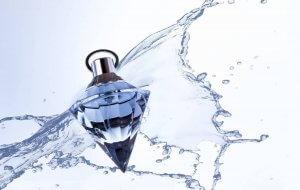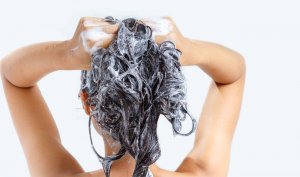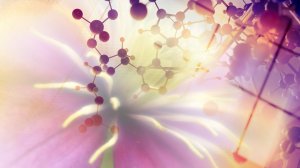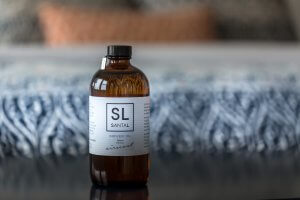Adding fragrance to water-based, or water-soluble, products involves a basic understanding about the nature of raw materials and their chemical place in scent formulation.
It is a unique form of alchemy that may seem a bit magical and elusive, but is actually no mystery at all for our master perfumers at Alpha Aromatics.
Water is non-invasive and much gentler and easier on the skin than other substances.
Oil molecules are non-reactive because they do not contain any charge and they are formed by long chains of hydrogen and carbon atoms that are linked to each other.
In the water-based perfumes, essential oils are mixed with distilled water to create a natural, soft and unexpectedly long lasting fragrance.

Water is a natural solvent that liquefies many substances, but unfortunately, not all raw materials dissolve in water including fragrance oils, which are key ingredients found in many personal care products that do contain water.
Alcohol is the most common solvent used to break down fragrance oils, especially denatured alcohol (SD alcohol), which is used to make the cheaper, watered-down fragrances such as: eau de cologne and eau de toilette.
Cetyl alcohol, sodium laureth, sulfate and poly-sorbate are also used to dissolve fragrance oils into water for use in creams, lotions, shampoos, conditioners and body washes.

Alcohol is a preferred choice as a solvent because of its specific composition of polar molecules, which are defined as those have an uneven distribution of electron density or more simply put, they have both positive and negative aspects.
Due to the fact that alcohol is less polar than water, it evaporates more rapidly and boils at a lower temperature.
Known as ethanol or ethyl alcohol, it is used to blend essential oils into water in such a manner that they become one homogenous substance that can never be separated again.
How Do Solvents in Fragrances Work?
Solvents are generally liquid in form and their purpose is to dissolve, suspend or extract other raw materials without altering chemically either the solvent or the other substance.
The process occurs when the particles of both the solvent and the substance to be dissolved (solute) become powerful enough to overcome their affinity for one another.
Evaporation happens when the water molecules shift fast enough to escape from the solution and into the air.
How Solubilizers Work Within Water-Based Products
Solubilizers are surfactants, a category of molecules that will be explained more in depth below.
They are also unique solvents because they are totally water soluble and at the same time possess a bit of oil solubility as well.
They dissolve and uniformly disperse an essential oil in a water-based product and other related mediums, like herbal infusions. They also help to make soluble any ingredients which are not.
A solubilized molecule contains particles that are so tiny that the resulting solution is either transparent or translucent.
These are vital inclusions in fine perfumes because without them, a layer of oil may swim on top of the formula.
Not only does this affect the aesthetics of the finished product, it can also cause functional and safety issues as well.
If a formulation is solubilized, the concentration of essential oils and preservatives is always uniform from the very first to the last drop of the perfume.
The Principle Of Like Dissolves Like
Whether or not a particular substance will dissolve into another is determined by the chemical properties they share.
Polar compounds, which dissolve in water, can only liquefy into other polar compounds, and non-polar amalgams can only break down into others of their ilk.
They cannot cross over, and there must be at least one property they have in common in order for solubility to occur.
This is the primary reason why salt will dissolve in water, but not in oil.

Surficants Or Surfactants
Also known as surface active molecules, surfactants are the most versatile creations found in the chemical industry.
They are a family of molecules that have a wide range of applications from personal care products, such as shampoos, to harsh industrial materials used in drilling muds and pharmaceuticals.
There are two types of surfactants; namely, ionic and non-ionic.
The main difference between the two concerns the fact that ionic varieties are formulated with cations and anions (they are positively charged) while non-ionic surfactants lack these two components and are negatively charged.
The specific content of each of these molecules always includes one hydrophilic (water-based) and one fat (lipid) component.
This translates physically into the fact that they extend across the divide between oil in water and attach themselves to either the water or fat ingredients.
When added to a liquid, surfactants reduce surface tension, and by doing so, increase spreading and wetting.
Emulsifiers And Water Soluble Emulsions
Emulsifiers are chemical agents that help to stabilize fragrances by blending two ingredients that are considered incompatible, and forming physical barriers between them that prevents consolidation.
They are attracted to both polar and non-polar compounds and help to dissolve essential oils that are often found in many creamy textured products such as shampoos, making it unnecessary to shake up the bottle before use.

The end result is a water soluble emulsion, which is defined as a finely divided mixture of two or more liquids that consist of particles that are larger than atoms or ordinary molecules but too small to see with the naked eye.
The dispersed phase has a concentration (depending on the emulsifier) between 1-80%.
Water-soluble emulsifiers are made with natural plant-sourced ingredients, which help to keep the pure essential oils suspended in liquid form and the liquids from separating in order to form an even and stable texture to a particular formula.
What Exactly Are Dispersants In Fragrance Creation?
Dispersants lie somewhere between surfactants, solubilizers and emulsifiers.
They cause a temporary forced scattering of a substance into smaller parts and in many directions. There is no alteration in the substance itself; it just disbands briefly.
They are a bit different from other surfactants when defined on the basis of their function.
A dispersant prevents the formation of clusters of particles in a suspended state, while most surfactants lower the surface tension between two liquids (either gas and a liquid or between a liquid and a solid.)
This is the major difference between them.
Furthermore, a dispersant absorbs particles and orients them onto the liquid air interface, while a true surfactant absorbs on the solid juncture.
Dispersants can release a very low concentration of oils, like Vitamin E or triglycerides, in water but they cannot completely solubilize the oil, which results in a product that is not completely transparent, but rather a milky solution which remains stabilized for a period of time.
What Are Clarifiers?
Clarifiers are thickeners that remove solid particulates or suspended solids from liquid.
There are six methods by which essential oils slated for the perfume industry are extracted from plants. These include: steam distillation, boiling, solvent extraction, enfleurage, maceration and expression.
In the manufacture of fragrances, the most commonly applied process is steam distillation because the essences to be extracted have the capacity to combine with water vapor at boiling temperature.
Odor Control Additives For Water-Based Products
In order to be truly effective, effective odor neutralizers must create a chemical reaction, which merges with the malodorous molecules and kills them dead forever.
Some of the best odor-control additives available anywhere for water-based products are developed and utilized in our state-of-the-art Pittsburgh laboratories and include the following:

4-O-DOR
Chemically known as N-Soya-N-Ethyl Morpholinium Ethosulfate, this neutralizing agent is derived naturally from soybeans.
It is highly versatile and used for skin, hair, deodorants and fabric freshener products, which particularly benefit from its anti-static, and softening properties.
DUO 2.0
This nullifying, odorless agent is a blend of Metazene, the world’s most potent neutralizing additive, and 4-O-DOR.
This dual action combination transforms this compound developed by Alpha Aromatics, into a powerhouse of both vapor phase and direct contact odor reduction.
It is recommended for use in air fresheners, fabric care, cleaning products, pet odor products, industrial and institutional products, and wastewater treatment.
ZRx
This series of surface area applications includes: fabric, hair and skin products, such as air fresheners; aerosols; non-aerosol pump sprays; passive air fresheners; candle; wicks; gels; plastics; plug-ins; solids and auto novelties
There are five specific venues:
OZ-Rx-N: This application is safe for skin and used in spray and roll-on deodorants, cosmetics, hair care, soaps, pet coats and skin.
Z-Rx-30™: This category includes: air fresheners, cleaners, laundry products, pet odor control, water soluble paints and coatings, and industrial fogging.
Z-Rx-50™: This application is known for the fact that it is both alcohol and solvent soluble. It is recommended for use in paints, resins, solvent-based formulations, cleaners and aerosols.
Z-Rx-20/Clear™: This option forms consistently clear water soluble solutions.
ZRxPC20™: This is a stand alone odor neutralizing system.
In Conclusion
We are a leading manufacturer and purveyor of fine perfumes that both stand alone and are integrated into a myriad of diverse personal care, cleaning and air freshening products has been a part of the Pittsburgh industrial landscape for almost eighty years.
If you are a company seeking help with a water soluble product that requires a special fragrance added to it, call our teams today!

 alpha aromatics®
alpha aromatics®
